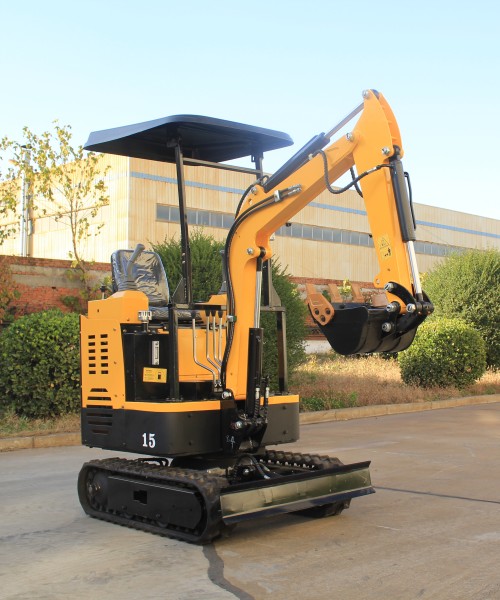The most important actions of small excavators during operation include the following: boom lifting, arm retraction and extension, bucket loading and unloading, turntable reversal, whole machine travel, crushing and other actions. This topic mainly studies the composite actions of boom lifting, arm retraction and extension, and bucket loading and unloading. The most important actions of a typical working cycle include the following:
Basic working conditions of small excavators
(1) Excavation: boom raising, arm retraction, bucket excavation. This working condition is mainly the complex cooperation of boom and arm cylinder.
Under the excavation condition, the rodless chamber pressure of the boom cylinder is much greater than the rodless chamber pressure of the arm cylinder, which is the maximum load pressure. The LS oil circuit pressure and the main pump output pressure are selected. It is explained that under this working condition, the arm is a small load and the boom is a large load, which is an unbalanced load condition.
(2) Full bucket reversal: boom raising and turntable reversal. This working condition is mainly the composite action of the boom cylinder and the reversing motor.
Small excavator
In the first 1.5 seconds, the reverse motor pressure is the maximum load pressure, and the LS oil circuit pressure and the main pump output pressure are selected. Then, the rodless chamber pressure of the boom cylinder is the maximum load pressure; when the reverse motor brakes, its outlet pressure increases instantly. This shows that the small excavator needs to overcome a large static friction force when starting. During manufacturing, its rotational inertia is large, and a lot of kinetic energy is converted into hydraulic energy, causing the pressure of the return oil port of the reverse motor to increase instantly.
Basic working conditions of small excavators
(3) Unloading: the boom is lowered, the dipper stick is extended, and the bucket is unloaded. This working condition is mainly a composite action of the boom and the dipper stick cylinder.
The rod chamber pressure of the dipper stick cylinder is slightly higher than the rod chamber pressure of the boom cylinder, which is the maximum load pressure. LS and the main pump output pressure are selected. The rodless chamber pressure of the boom cylinder is higher than the rod chamber pressure of the boom cylinder, and it increases gradually. This shows that under this working condition, the dipper stick is a large load, the boom is a small load, and the boom is a negative load.
(4) Linear reversal with empty bucket: The boom descends and the turntable reverses. This working condition is mainly a composite action of the boom cylinder and the reversing motor [28]. The boom continues to descend at a constant speed during unloading, and the pressure change in the cylinder is similar to that in the unloading condition; the pressure change in the reversing motor is opposite to that in the full bucket reversing condition, so it will not be analyzed in detail.
